Transcription of Best Practice Materials for Nonprofit Boards - OrgWise
1 I Executive Service Corps of Washington best Practice Materials for Nonprofit Boards i TABLE OF CONTENTS ESC SECTION 1: ROLE OF THE Responsibilities of the board of Clarifying the role of the board and the role of the professional board and Executive Director Sa mple Boar d Membe r Commitme nt For Sample Position Descriptions for board Member, board of Position board President or Chair of the Vice President or Vice Chair of the Secretary of the Treasurer of the Organizational Life ! Bookmark not defined. Proposed board Self Assessment SECTION 2: board Checklist of material for Potential board The Do s and Don ts of board board Member SECTION 3: board Sample board Policies for New 990 Conflict of Document Retention Policy & Whistleblower Policy & Private Inurement SECTION 4: 2 INTRODUCTION These Materials are provided as templates or a starting point for your organization.
2 You should carefully consider what the needs of your organization are and modify the documents to fit your needs. Forming an effective board requires the board to have a clear answer to this question: What benefits (or end results) are we providing to whom and what will it cost us to do this? In addition to answering this question, the board needs to establish a single point of administrative authority. This person is responsible for using what ever means are necessary to accomplish these desired ends, within limitations the board should establish in advance. Examples of limitations are not breaking the law, not treating volunteers, staff or clients inappropriately, or not getting into debt etc. If the board is clear about its role, approves procedures for how the board is going to operate and establishes a partnership with the administrative director that allows that person to take action to accomplish the intended end results of the organization, the organization will be able to make better decisions more quickly and use the talents of its board members and administrative director.
3 ESC SERVICES Executive Service Corps works with the Boards of many organizations each year, providing board training, retreat planning and facilitation, strategic planning or goal setting, confidential board surveys and other services. Thanks to our volunteers donating their time and talents and the support of corporate and private funders, all ESC services are provided at affordable sliding scale rates. board ENDS Executive Director MEANS 3 SECTION 1: ROLE OF THE board A Nonprofit organization must, at a minimum, have a board president or chair, vice president or vice chair, secretary, and a treasurer. It is important that most board members are not related to the founder or executive director. A board of less than 15 will be better able to operate as a group and achieve a high level of engagement.
4 Ideally, board members should be people who are interested in governing the organization not in hands on volunteer activities and, especially, not in a management role. You can involve others in your organization by establishing a resource council rather than having a large board . Responsibilities of the board of Directors Framework The board of Directors establishes the framework for the organization. Creates and updates the mission and vision statements Defines what benefits (or end results) the organization is providing to whom and what it will cost to deliver them? Determines how organizational performance will be measured. Direction The board of Directors sets the direction for the organization. Sets goals and approves and monitors the strategic or business plan Develops organizational policies, including the policies that govern how the board will operate.
5 Accountability The board of Directors is responsible for the behavior and performance of board members and the executive. Establishes the code of ethics for the board and ED, including policies related to private inurement and conflict of interest, and sets the tone for organizational behavior. Hires and fires the Executive Director/Chief Executive Officer (ED/CEO). Establishes the end results the Executive Director is assigned to achieve and defines any limitations on the means the ED can use or any functions the ED must perform. Monitors financial and operational performance. Evaluates the executive director based on achievement of the end results and compliance with predefined limitations or requirements. Serves as the last court of appeal within the organization. Selects an auditor and receives the audit report.
6 Good Will and Support The board of Directors represents the organization to the outside world and provides support and counsel to the executive director Supports the organization by making personal donations, garnering resources and advisors and assisting with fundraising. Serves as the organization s ambassador to other agencies, funders and potential funders and the general community Communicates the value of the organization to prospective donors. Attracts donors, supporters, favorable press, and new board members 4 Clarifying the role of the board and the role of the professional ED This tool helps board and executive directors or CEOs clarify who has the primary accountability for what organizational activities. The list shown below and the choice in the responsibility column are not necessarily the correct answers for your organization.
7 If, however, the majority of activities are the responsibility of the board you should explore the question of whether you have delegated sufficient authority to the executive director for them to be effective in leading the organization. Executive directors who must consult with the board on most management decisions may not be able to move the organization forward and respond to opportunities or threats. Clear authority makes the organization more agile If a responsibility belongs to the executive director, the board should discuss if the executive director should bring information about that function to the board , in what form and frequency. Unless directed by the executive director, the board should avoid gathering information about the organization or setting up relationships with staff members other than the executive director, since this will compromise the management structure of the organization.
8 Directions As a group, go through the list of activities and add any major activities undertaken by the board or major activities that are carried out by the ED. Then go through and define who is primarily responsible for each activity. You can use the tools as it is with answers supplied in the responsibility column or use a blank column which opens up the discussion further. This tool is a vehicle for exploring the assumptions of all members of the board and setting out clearly those activities for which the ED has primary responsibility. Limit shared responsibility to only those few activities that must be shared. Having the lead responsibility for something does not rule out information sharing, monitoring of performance, or consultation between board and ED. 5 board and Executive Director Responsibilities Activity Responsibility board OPERATIONS Develop, approve and modify bylaws board Establish written policies and procedures for board operations not addressed in the bylaws board Appoint committees and hold them accountable board Establish and enforce expectations for attendance at board /committee meetings board Recruit new board members board Train board members Joint Plan agenda for board meetings Joint Take minutes at board meetings board Sect.
9 /or delegated to staff other than ED Plan and propose committee structure board Prepare exhibits, Materials , and proposals for the board and committees ED Sign or delegate the signature of legal documents board Follow-up to insure implementation of board and committee decisions board President and ED Settle discord between committees board President PLANNING Establish mission board Articulate a vision for achieving the mission board Approve long range goals board Provide input to long range goals ED Formulate annual objectives ED Direct the operational planning process ED Approve the ED s annual objectives board Prepare performance reports on achievement of goals and objectives ED 6 Monitor achievement of goals and objectives Joint PROGRAMMING Assess stakeholder/client needs ED Oversee evaluation of products.
10 Services and programs ED Develop new programs or revise current programs ED Approve new programs or major revisions to current programs Joint Maintain program records; prepare program reports ED Determine if the organization is being effective in achieving its mission (Review program evaluation, client/customer surveys. Hold meetings with constituents or clients etc.) board FINANCIAL PLANNING, MANAGEMENT, AND OVERSIGHT Prepare operating and capital budget ED Finalize and approve budget board Ensure that expenditures are within budget ED Approve expenditures outside authorized budget levels board Provide for the periodic audits and financial reviews board Develop financial policies and procedures , including policies related to private inurement, retention of records, conflict of interest, and whistleblower policies ED Approve financial policies and monitor that policies are being followed.
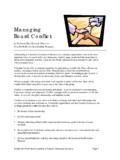



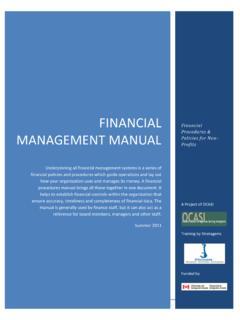


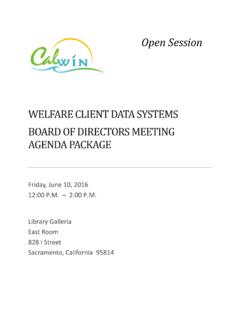



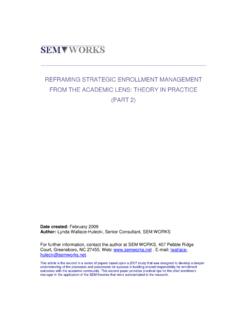
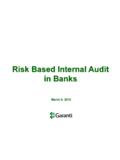

![Internal Audit 2020 Final [Read-Only]](/cache/preview/0/a/d/f/a/4/1/0/thumb-0adfa4104fce426b1e64bad8fdd0e500.jpg)